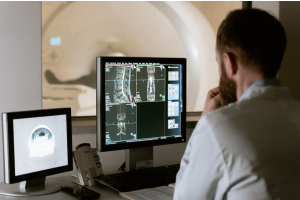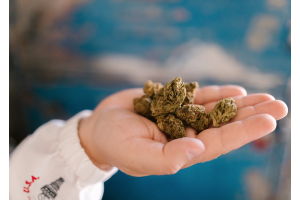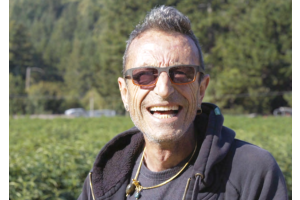Made for Each Other, Relationship with Cannabis

Throughout mankind's history there is evidence that we have always shared a special relationship with Cannabis.
From traditional medicines to spiritual journeys, cannabis seems to have been intertwined with our cultural and spiritual evolution across continents and cultures yet it is still maligned on many fronts.
Now, even as we see signs of progress in terms of an increased acceptance of its potential to help and heal, it remains an illicit substance that is prohibited in many parts of the world. What makes this fact so frustrating is that the evidence for its benefits has been apparent for so long but it is still largely ignored.
It's easy to talk of the prohibition imposed by many governments within the last couple of centuries. That being said, we increasingly recognize the positive effects that cannabis can have on our mood and sense of wellbeing and we hear testimonials from countless patients who preach of its effectiveness in comparison to modern pharmaceuticals yet, almost incomprehensibly, we still live in a world which widely considers its cultivation as a criminal act that's worthy of imprisonment and we are still told of the inherent dangers of its addictive and psychoactive nature.
When you take the time to consider the reality of treating cannabis as a criminal substance, the amount of Police time and money which is wasted prosecuting the casual ‘user’ is truly shocking. It was long hypothesized that the active component Tetrahydrocannabinol (THC) is the major active component when cannabis is consumed by humans, but for many years there was no real explanation as to why this would be the case.
In 1964, however, Raphael Mechoulam and his team in Israel managed to isolate the chemical and then synthesize it under laboratory conditions.1] Consequently, theories began to surface that there must be an active receptor in the brain which absorbed the plant’s contents and hence allowed the consumer to experience a variety of symptoms dependent on the concentration of THC the plant had developed in cultivation.
This was widely accepted as the truth as there was no evidence to suggest that the findings were incorrect but they were not entirely conclusive. Later, in 1988, Allyn Howlett and his colleagues managed to locate a receptor in the brain which was an exact match for the chemical composition of the Phytocannabinoids found in the Cannabis plant; the discovery of this ‘CB1’ receptor, as it is known, led to a paradigm shift in the hypothesized relationship between plant and man and scientists began to suggest that we were actually 'hardwired’ for Cannabis as opposed to simply being affected by it.
They reported that 'the CB1 receptors have been found in areas of the brain that control the coordination of movement, emotions, memory, reduction of pain, reward systems and reproduction yet are almost absent in the brain stem (which affects our vital functions such as breathing)’.1In addition to this it has been discovered that these receptors are found in the brain itself at a far higher concentration than any other chemical receptor and while CB1 receptors tend to be located in the central nervous system (CNS) there is also a second set of receptors which are found primarily in the immune system, bones, peripheral nervous system (PNS) and heart which have been labeled as CB2 receptors.
These discoveries were then furthered in 1992 when Dr. Mechoulam discovered that humans actually produce their own type of endogenous cannabinoid (Arachidonylethanolamide/Anandamide) which act as the link between our receptors and external
sources of cannabinoids; by 1995 his lab had discovered a second endogenous cannabinoid which they called 2-arachindonylglycerol (2-AG). These receptors form what is known as Endocannabinoid system (ECS) and this is deemed to be an essential part of our physiological being. Internal and external cannabinoids, which can be found in all manner of plants, interact in a manner which promotes survival and regeneration, enables us to fight infections efficiently and regulate our patterns of relaxation, sleep, memory and eating.
The Endocannabinoid system is an essential part of us and by restricting our access to naturally occurring cannabinoids we may actually be doing more harm than good but ‘to understand that this system of life exists within your body and brain is to understand the remarkable and various therapeutic applications of cannabis’.1Establishing this link between cannabinoids and the CB1 receptors in the brain paved the way for researchers working for Sanofi-Aventis2 to create a drug designed to block out the binding facility and hence render the receptors useless.
In many ways this study was in response to reports that increased obesity levels were hypothesized to be linked to increased levels of cannabis use in society. The idea was that by blocking them you would essentially suppress the sense of hunger associated with 'the munchies' and, as a result, people would eat less.
However, the actual results proved to be far from desirable. In 2006, the European Medicines Agency (EMEA) gave the green light to this new compound under the name of Rimonabant making it available over the counter in Britain without prescription; within two years it was available in 56 countries but not in the United States as the FDA were concerned about reported side effects which included nausea, neurological problems and even suicidal tendencies due to an onset of deep depression.
Furthermore, across the world people experienced severe neuropsychiatric side effects, increased recurrence of relapse in Multiple Sclerosis sufferers as well as issues regarding erectile dysfunction and gastrointestinal symptoms at a level three times higher than the norm. Evidence began to emerge that Rimonabant also potentially increased the likelihood of colon cancer and promoted neurodegeneration2 ; continuing research into endocannabinoid activators proved that their artificial stimulation had the complete opposite effect on almost all of the reported ailments. Fortunately, by 2007 the EMEA suspended its approval of Rimonabant but not before almost 40,000 people were using it in the UK alone.
Even now it is still sometimes sold online to an unsuspecting public as an aid to weight-loss by some pharmaceutical companies under different labels.2While there are numerous arguments in support of the idea that cannabis and humans are designed to interact, the issue remains that some people favor the concept of synthetic cannabinoids over the real thing.
If we truly are ‘wired’ to receive the benefits of Cannabis and drugs designed to block our receptors cause catastrophic damage to the body how can it still be legitimately illegal to grow and consume it in its natural form? Personally, I believe that we should respect the way that nature has evolved and stop trying to play God for the purpose of profit.
Sadly, until we finally find ourselves facing a real change across the globe the impact of cannabis on people will continue to be an unwarranted concern to many and a point of contention to some.
References:
1 http://www.medicalcannabis.com/Cannabis-Science/endocannabinoid-system
Written and Published by Psy-23 in Weed World Magazine Issue 158
Featured Image: Pexels












Validate your login